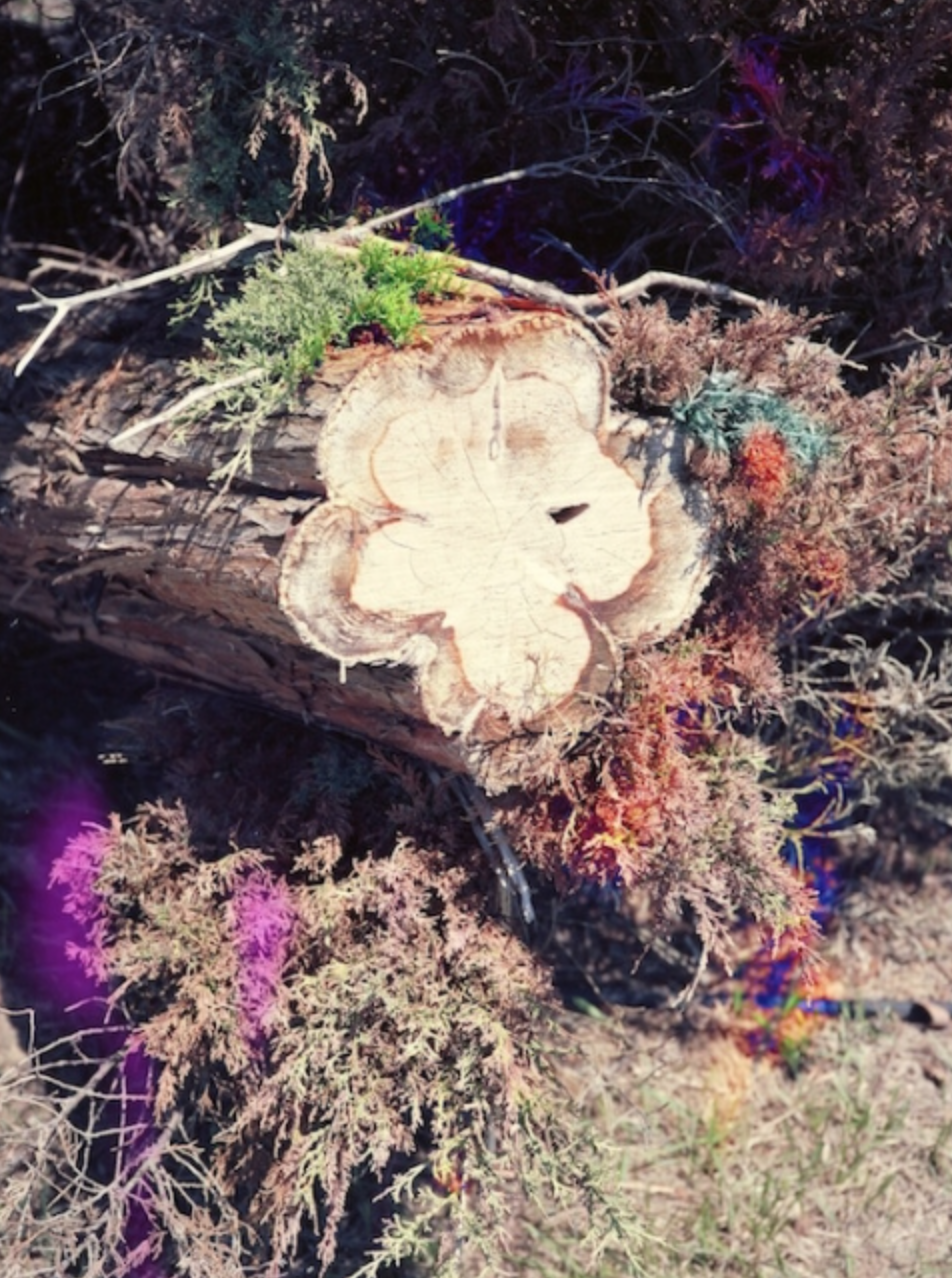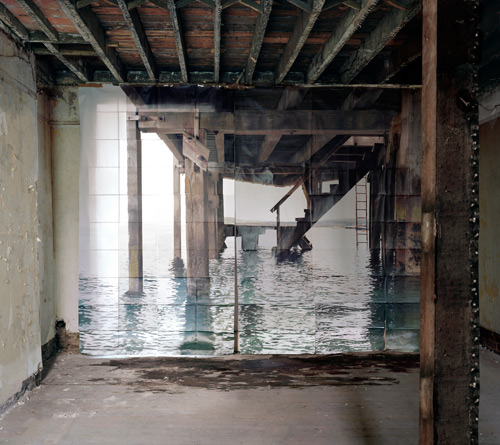Artist Blog
Every week an artist whose single image was published by Der Greif is given a platform in which to blog about contemporary photography.
Utopian Impulses in Practice
Jun 05, 2015 - Alexandra Lethbridge
I thought I would show some work by other photographers using interventions and experimental techniques to create imagery and expand on some of the ideas I touched on in the last post. The first photographer I’m going to look at is Charlie Rubin and his use of interventions in his project Strange Paradise. This series works by combining photos that he has manipulated with imagery that he hasn’t but seems to have some kind of a fantastical quality about them. It is by playing with the juxtaposition of these two different kinds of images and what is real or fictional, that you begin to engage with this place as possibly existing. It’s in that moment of uncertainty about whether this is real of not that acts in the interpretative space of the Utopian. He has also managed to create a place that is close enough to reality to confuse us but still show evidence of a fictional space. In Thomas More’s writings on Utopia, he talks about how the visibility in the construction and process of the Utopian must be evident for it to be Utopian at all. Should it be too convincing, we might believe it was real and then it couldn’t be imaginary and in turn hold the ideals of Utopia. This point is really important in understanding Utopia within Photography. Another good example of this is Noemie Goudal. She creates constructed spaces leading to make believe worlds where she examines the idea of the photograph as evidence. Her work is based heavily in the construction of this other world. Taking images and reconstructing them into other spaces, she creates a third plane where these two layers exist together. The on site collages that she makes are not pretending to be anything other than what they are. The construction of the interior images are obviously just that – constructions and this visibility is what tells us this is an illusion and allows us to enter it. Andre Bazin in his writings on the Ontology of the Photographic Image, describes the Photograph using the word Hallucinatory. It’s a very interesting use of the word - it opens up our understanding of how we interpret the photograph, particularly in relation to it being truthful. The two photographers I have shown both translate this notion in different ways but ultimately achieve the same results in leading us to an illusionary world through the one we know. Moving forward, I began to think about the reasons for using interventions. Following an email interview I conducted with Julia Cockburn during my Masters – another artist working with found imagery and interventions to create images, I asked her what drives her to make the kind of work she does and I found her response very interesting. “My interventions of cutting or sewing or adding new objects are not supposed to be illustrative. More, they are supposed to interrupt the viewer ‘knowing’ the image (the images I work on are archetypal, recognizable in the collective consciousness), and therefore hopefully able to ask of the piece and perhaps themselves, empathetic questions about what it is to be human.” My discussion with Julie showed me the advantage in disrupting the image is the ability to be able to say or translate something that may speak to a wider context. In the history of collage, the reason for combining 2 or more conflicting elements within the same plane is to be able to make a new form of thought arise. In the rupturing of the imagery, you are able to access an interpretative space outside the realm of traditional, representational photography and within this rupture, you are able to talk about concepts and ideas outside of our everyday experience. These ideas form the basis of my interest in Photography and the core themes that run through my work, in particular my last project, The Meteorite Hunter. For more of Charlie Rubin's work click here. For more of Noemie Goudal's work click here.



